PHOTOS: The Zoo’s New Carousel is One Wild Ride
With 56 original pieces that show-off animals from the Zoo’s collection, the ride is sure to please all ages
![]()
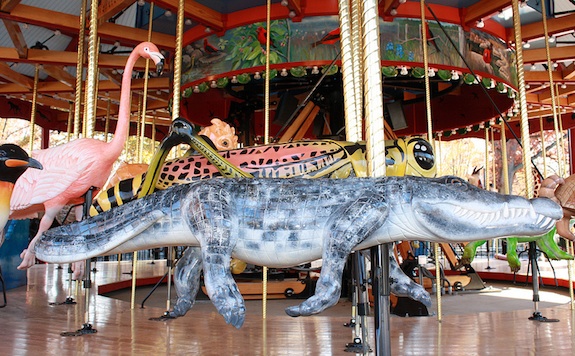
A menagerie of animals awaits. Photo by Devin Murphy, courtesy of National Zoo
People travel thousands of miles just to get an up close look at cheetahs and lions, but now you can just wrangle yourself a ride on the backs of your favorite animals aboard the National Zoo’s new solar-powered carousel. The old-world oompa-pah-pah carnival ride will never be the same again. With its 56 hand-carved figures and two hand-carved, stationary chariots, this merry-go-round includes everything from a praying mantis to a cuttlefish.
Designed and created by Ohio-based Carousel Works, each figure is actually modeled from real-life animals living at the Zoo.
Art Ritchie, Carousel Works co-founder and co-owner, along with Daniel Jones, has overseen dozens of similar projects at Zoos from the Bronx to L.A. to Detroit. He says, “With the building and everything, it’s anywhere from a million- to two-million-dollar project and people get really serious about it.” But, he says, ultimately, “you’ve got to remember who your customer is. Your customer is eight-year-olds, so if you’re not smiling and laughing while you’re picking these things out, there’s something wrong.”
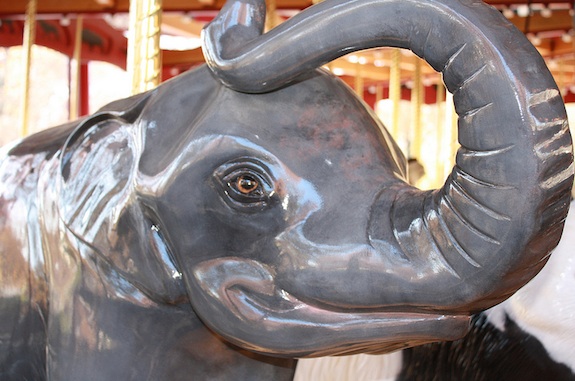
Based off of animals actually in the Zoo’s collections, the figures are each hand-carved. Photo by Devin Murphy, courtesy of National Zoo
With that in mind, Ritchie has his granddaughter, nine-year-old Alexa, to help approve of final designs for each figure. “She’s my design assistant,” he says, “she’s got her own business card and everything.”
But Ritchie’s favorite reaction to one of his projects wasn’t from a child at all. After completing a carousel in Des Moines, Iowa, Ritchie says a woman in a nursing home celebrating her 100th birthday wanted nothing more than to ride the giraffe on the newly completed carousel. “So they brought her in an ambulance, they brought her over, they had a party and they put her up on the giraffe and she rode the giraffe,” he says. “She was doing nothing for her birthday, outside of going to that carousel.”
Ritchie and his daughter, Kate Blakley, who serves as the marketing director for Carousel Works, have a theory that carousels appeal to every age group–every age group that is except for 12- to 16-year-old boys. “It’s very uncool,” says Ritchie, “but then all the sudden they find girls and it’s cool to take a girl there because they love it.”
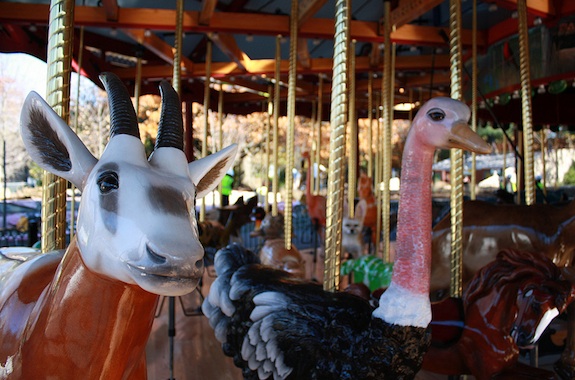
Want to learn more about wild animals? Start with some fun. Photo by Devin Murphy, courtesy of National Zoo
More than just a fun ride, though, carousels can be educational tools, argues Ritchie.
“The first carousel we were doing in Fort Wayne, Indiana, the director came over because everybody told him this is ridiculous, this is never going to work,” he remembers. “One week, he was there with his granddaughter and she got antsy so I put her up on a Malaysian taper, which is like a little pig with a prehensile nose,” says Ritchie. Rolling her around on the black and white taper, Ritchie says the director began explaining to his granddaughter why some tapers tapirs were black and white and others brown instead.
Three weeks later, Ritchie says the director called him up from the Miami Zoo, where he was helping with a planning session accompanied by his wife and granddaughter. “I think it was 10 or 11 at night, and he said, ‘This is gonna work, this is gonna work.’” The director explained to Ritchie that he was going around the Zoo with his granddaughter, when they saw the tapirs tapers, sandwiched between the much-more popular elephants and hippos. Where every other kid walked past the tapirs tapers probably thinking, “That’s a funny looking pig,” his granddaughter stood in front of the tapirs tapers for 25 minutes, telling passersby all about the animal’s unique coloring.
“That’s when he knew this thing was going to work.”
After a year on the job, with 25 other workers pitching in, the Speedwell Conservation Carousel was installed in late November, just in time for the holiday season. Though Ritchie had some repeat species from other Zoo projects, a handful of the Smithsonian animals were completely new, including the cuttlefish, naked mole rat, orangutan, baby camel, gazelle and others.
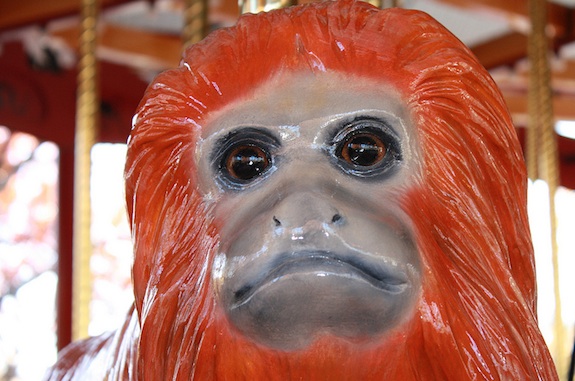
The tamarin’s bright coat helps it stand out. Photo by Devin Murphy, courtesy of National Zoo
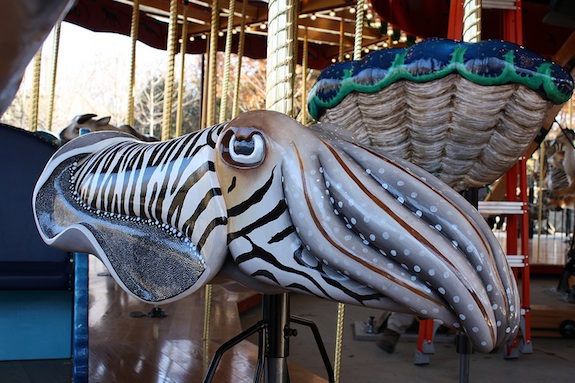
The cuttlefish was one of several totally new designs for Carousel Works. Photo by Devin Murphy, courtesy of National Zoo
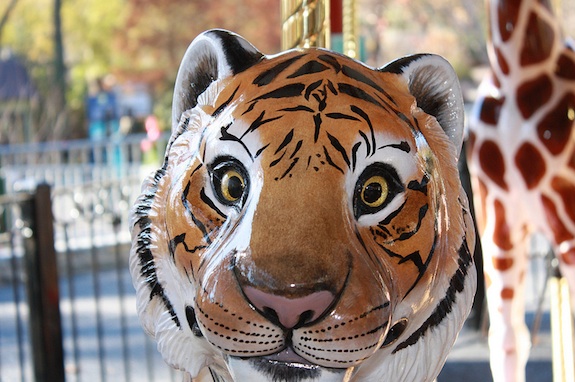
As close as you want to get to a tiger. Photo by Devin Murphy, courtesy of National Zoo
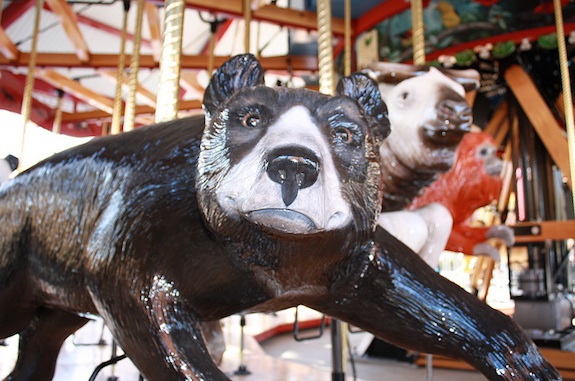
A black bear strides along. Photo by Devin Murphy, courtesy of National Zoo
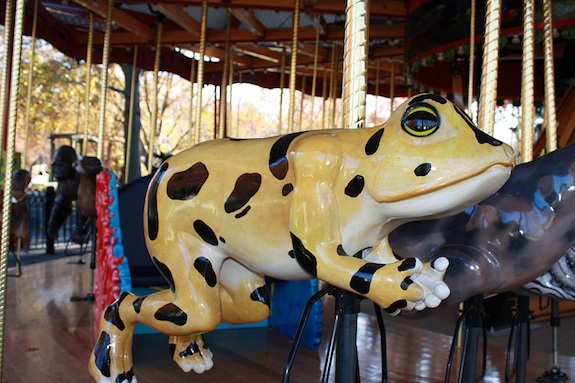
Even small animals shine on a ride bursting with biodiversity. Photo by Devin Murphy, courtesy of National Zoo
/https://tf-cmsv2-smithsonianmag-media.s3.amazonaws.com/accounts/headshot/Leah-Binkovitz-240.jpg)
/https://tf-cmsv2-smithsonianmag-media.s3.amazonaws.com/accounts/headshot/Leah-Binkovitz-240.jpg)